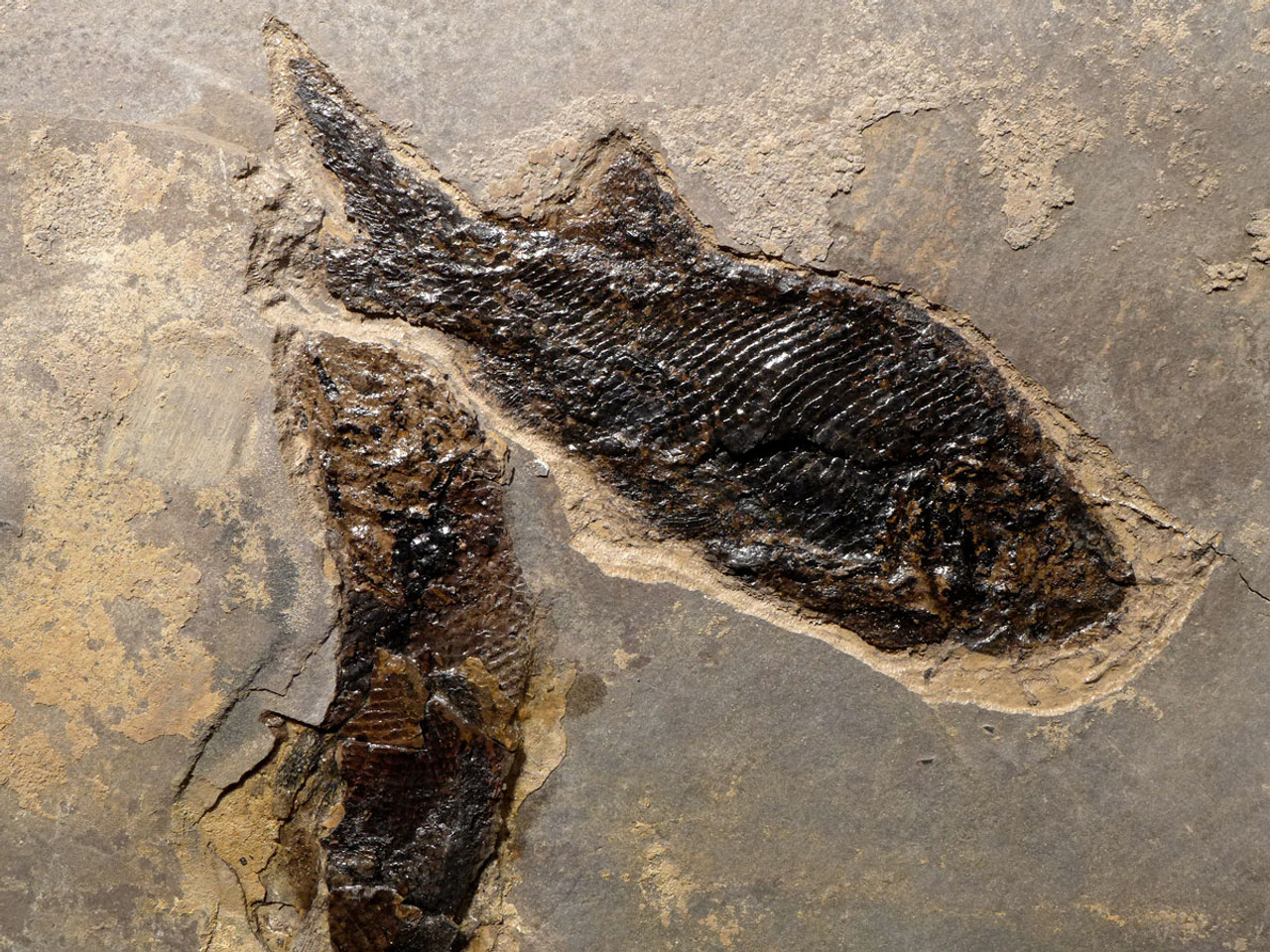Product Description
SPECIAL NOTE: The laws in this region of Germany have forbid the collection of these remarkable fossils since 1986. Such legislation has permanently ended the supply of such magnificent specimens such as this one being offered here. This rare example comes from an old German private collection and was collected long ago before the ban was enacted. With digging in the formation now off-limits, these German Permian fossils are sure to appreciate in value and become increasingly difficult to acquire.
While many prehistoric fish dominate fossil market, this authentic prehistoric bony fish is definitely scarce and one of the earliest of its kind dating to well before the vast majority of fossil fish usually offered for sale. This fish lived well before the dinosaurs and was alive even in the last days of trilobites! No fossil collection should be absent such a unique specimen.
This natural multiple fossil Paramblypterus duvernoyi is an excellent example of a primitive fish with unique anatomy. It displays detailed preservation of the complete fish on the original shale on which it was found. Along with the large main fossil fish, there are multiple smaller Paramblypterus fossil fish laying over each other off to the side. The Paramblypterus was very primitive fish had an asymmetrical tail with the longer upper lobe having a small edge of fin and the rest being fleshy, covered with heavy scales like the rest of the body. The close-up image shows fin and scale detail of this unique anatomy. The fossil's original dark brown-black hue is original. Entire slab is original and displays a beautiful combination of naturally occurring layers of color.
The Paramblypterus fish was a primitive osteichthyan (bony fish) and a member of the actinopterygians or ray-finned fish. Now extinct, Paramblypterus duvernoyi possessed some very primitive features, most notably, its shark-like tail with a fleshy upper lobe. To put in perspective just how old the Paramblypterus is, these primitive fish were around well before the very first dinosaurs, when trilobites still existed on our planet!
 US DOLLAR
US DOLLAR
 EURO
EURO
 AUSTRALIAN DOLLAR
AUSTRALIAN DOLLAR
 CANADIAN DOLLAR
CANADIAN DOLLAR
 POUND STERLING
POUND STERLING














